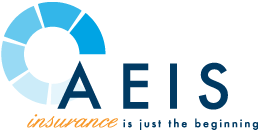Employee Benefits and Its Effect on Productivity & Performance
Written by: AEIS

The ROI of Investing in Employee Benefits
For business owners and HR leaders, employee benefits are more than just a line item in the budget. They represent a strategic investment in workforce satisfaction and productivity. Numerous studies highlight that comprehensive benefits packages not only help attract top talent but also reduce turnover, foster loyalty, and enhance performance. Companies that prioritize robust employee benefits often experience measurable returns in the form of higher productivity, improved morale, and better organizational outcomes.
Investing in benefits can also lead to financial savings in unexpected ways. Businesses that offer strong health and wellness programs often experience reduced absenteeism, lower healthcare claims, and increased employee productivity. According to the Society for Human Resource Management (SHRM), employers may see an average return of $3 to $6 for every dollar spent on wellness initiatives. These savings typically come in the form of lower long-term healthcare costs, fewer sick days, and improved employee retention—particularly for self-funded employers who directly manage claims expenses. With these advantages, organizations of all sizes are reevaluating their benefits strategies to maximize their return on investment.
The Link Between Employee Benefits and Their Effect on Productivity and Performance
Employee benefits directly influence productivity and performance by meeting key needs—physical, emotional, and financial. When employees feel valued and supported, their engagement and efficiency naturally improve. Conversely, insufficient benefits can lead to burnout, dissatisfaction, and higher turnover rates.
For example, offering comprehensive health insurance can provide employees with the peace of mind that they and their families are covered in the event of illness. Similarly, professional development opportunities demonstrate an employer’s commitment to growth, empowering employees to advance their skills and contribute more effectively to the organization’s goals.
The connection is clear: benefits that address the diverse needs of employees lead to a more motivated and productive workforce. When businesses focus on meeting those needs, they position themselves to achieve both immediate and long-term success.
Key Employee Benefits That Boost Productivity
Mental Health Benefits
Mental health support is one of the most impactful benefits an organization can offer. Programs such as Employee Assistance Programs (EAPs), access to therapists, or reimbursement for mental health services help employees manage stress, anxiety, and other challenges. Employees who feel mentally supported are more likely to remain engaged and productive in their roles.
Lifestyle HRAs
Health Reimbursement Arrangements (HRAs) tailored to lifestyle needs offer employees financial support for health-related expenses, such as gym memberships or wellness classes. This flexibility promotes healthier habits and overall well-being, reducing absenteeism and increasing energy levels at work.
Comprehensive Health Insurance
Health insurance remains a cornerstone of employee benefits. Employers offering competitive health plans—including options for vision, dental, and preventive care—can significantly reduce stress for employees, allowing them to focus more fully on their work. Offering plans that include benefits like telehealth services or maternity support can also be a game-changer for many workers.
Work-Life Balance
Flexible Work Arrangements and Work-Life Balance
Flexibility in scheduling can dramatically improve employee satisfaction. Whether through remote work, hybrid arrangements, or flexible hours, allowing employees to tailor their schedules fosters better work-life balance. Employees with flexibility are often more focused and efficient during working hours.

Remote Work and Flexible Scheduling
The shift toward remote work has shown that employees are often more productive when given the autonomy to work in environments that suit their needs. For businesses, this can also mean lower overhead costs and access to a broader talent pool.
Generous Leave Policies
Paid time off (PTO), parental leave, and sick days contribute to better performance by allowing employees to recharge and return to work energized. Businesses offering generous leave options often see higher levels of retention and employee satisfaction.
Volunteer Time Off
Providing employees with opportunities to volunteer—with paid time off to do so—can enhance job satisfaction. Employees appreciate companies that support their personal values and give back to the community, further fostering loyalty.
Career and Development
Professional Development Opportunities
Investing in your employees’ growth creates a more skilled and dedicated workforce. Whether it’s funding for certifications, on-the-job training, or tuition reimbursement, professional development opportunities show employees that they have a future within the company. This can significantly reduce turnover and elevate overall performance.
Recognition and Engagement
Recognition and Reward Programs
Acknowledging employee achievements through bonuses, awards, or even simple recognition in team meetings can have a profound impact. Employees who feel recognized are more motivated and committed to their work. Implementing structured reward programs can also drive productivity by setting clear goals and incentivizing high performance.
Community Engagement Opportunities
Encouraging employees to engage in their communities not only boosts morale but also enhances the company’s reputation. Sponsoring team participation in local events or charitable causes strengthens team bonds and fosters a sense of pride in the workplace.
Unconventional Benefits
Unconventional Benefits to Boost Work Motivation
Creative perks like pet care stipends, gym memberships, or fertility benefits can set an organization apart in a competitive hiring market. These benefits address unique employee needs and demonstrate that the company is committed to supporting their lives beyond work. For example, offering fertility support or childcare benefits can significantly improve retention among employees starting families.
How to Customize Benefits for Maximum Impact
Assessing Employee Needs and Preferences
The first step to building an impactful benefits program is understanding your workforce. Conduct surveys or focus groups to gather input on which benefits employees value most. This data-driven approach ensures that your investment aligns with their expectations.
Tailoring Benefits to Business Goals and Workforce Demands
Aligning your benefits program with your company’s strategic objectives is equally important. For example, businesses focused on attracting younger talent might prioritize student loan repayment programs or tuition reimbursement. Conversely, organizations with a more senior workforce might focus on retirement planning and comprehensive health coverage.

How AEIS Can Help You Optimize Employee Benefits
At AEIS, we specialize in designing benefits programs that meet the unique needs of your organization. From assessing employee preferences to negotiating with providers, our team takes the complexity out of benefits management. By working closely with you, we develop comprehensive, cost-effective solutions that boost productivity, attract talent, and promote employee well-being.
Ready to take your benefits strategy to the next level? Contact us today.
Disclaimer: Any information related to compliance, laws and regulations, or other subject matters in this piece is intended to be informational and does not constitute legal advice regarding any specific situation. The content is based on the most up-to-date information available at the time of publication and could be subject to change. Should you require further assistance or legal advice, please consult a licensed attorney.
We're here to help.
Schedule a free phone consultation today.
Latest Insights
Advanced Estate & Insurance Services, Inc. CA License #0M90887
Duda Website Design & SEO by RivalMind



